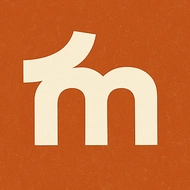I’ve been looking for a controller that bridges the gap between a traditional club setup and a more experimental, production-driven workflow. Last week I started testing the Pioneer DDJ-FLX10, and it has already reshaped the way I think about mixing. I wasn’t expecting it to have such a big impact, but a few days with it made certain ideas feel possible that I couldn’t quite execute on other gear.
The most talked-about feature is the Track Separation system, and it really does live up to the hype. Being able to isolate vocals, drums, and melodic elements in real time gives you far more flexibility than the standard EQ or filter approach. It feels closer to having stem packs for every song in your library, even if the original track wasn’t designed that way. I’ve already used it to strip out drums on one track while blending the chord progression from another, and the mix stayed clean without the usual frequency fighting. It opens up transitions that feel more intentional and more musical.
What surprised me even more was how useful the Part FX features are. They let you apply effects to specific elements, which creates moments that feel custom-built for the dancefloor. A simple vocal echo or drum stutter becomes something much more expressive when you can target exactly the part you want to manipulate. It’s the closest I’ve felt to performing “live remixing” on a controller without needing a separate sampler or additional decks.
The on-jog displays are another quality-of-life upgrade that I didn’t know I would appreciate this much. Seeing waveform detail, cue points, and BPM right on the jogwheel makes it easier to improvise. It reduces the amount of time I spend looking back at the laptop, which makes sets feel more physical and less like operating software.
Build quality matters, and this thing feels sturdy. One of my frustrations with certain controllers is how different they feel from actual club gear. The FLX10 doesn’t fully replace CDJs, but it’s close enough that jumping between home practice and club sets feels smoother. If you play out frequently, that consistency is a real advantage.
I’m still pushing it through long sets and experimenting with how it fits into my overall workflow, but so far it has been a strong piece of gear for both performance and idea generation. If your style leans toward creative transitions, unexpected blends, or storytelling through long-form sets, this controller gives you the tools to push those ideas further.
Overall, the FLX10 feels like a step toward the future of DJing — not because it replaces traditional skills, but because it expands what you can do with them.



Top comments (1)
Would love a follow-up on how the FLX10 performs in a real club environment—sound, workflow, and any surprises compared to standard CDJ setups.